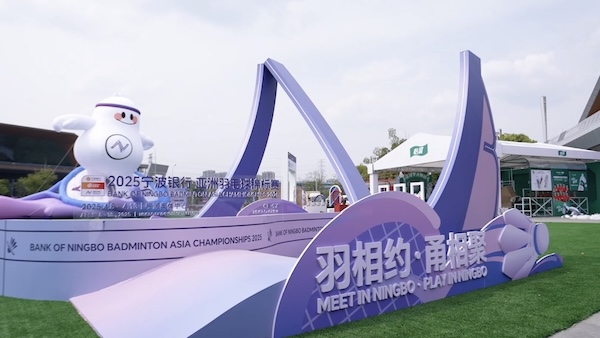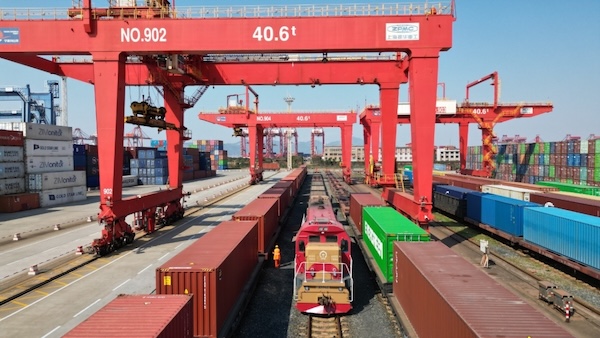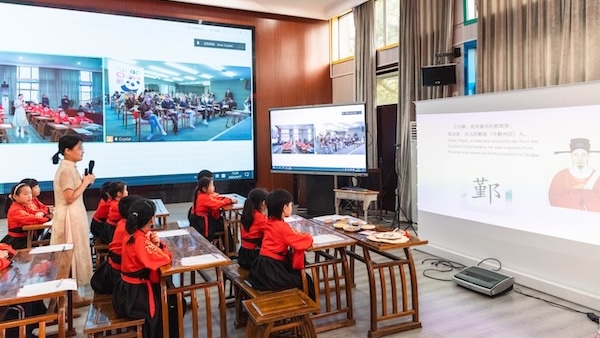Artistic endeavors bring fortunes to rural villages
Dedicated to supporting the goal of common prosperity, the Ningbo city government has given priority to promoting rural vitalization via cultural empowerment.
At the online 2021 China (Ningbo) Cultural Industries Fair, taking place from Nov 26-30, the city is showcasing how its creative and cultural industry benefits rural vitalization and brings fortune to villages.
The village of Gejia in Ningbo's Ninghai county used to be a plain village lacking tourism resources or a signature industry. Last year, it was chosen as a test area for Ninghai's rural vitalization by art and embraced a new round of development.
Cong Zhiqiang, an associate professor from Renmin University of China, undertook the project with his team. He brought his understanding of culture and practiced it on the foundation of local conditions.
Working with local farmers, Cong taught them to draw utilizing the local materials and get creative with artistic design. The villagers then began to foster their own ideas on art innovation and entrepreneurship.
The interaction between the artistic teams and the villagers gave them chance to transform local resources into businesses, broaden local industrial channels and increase their income.
Through the joint efforts, the village also got a new look. Stones have been piled into a "painted stone scroll"; dilapidated walls have been revamped into creative fences; and old-fashioned wire pillars and bamboo have taken on a "pastoral style".
To date, Gejia has incubated some 40 art spaces and more than 300 cultural and creative products, becoming a popular destination for tourists and buyers at home and abroad.
Similar to Gejia, the village of Chengyang is another impressive example under the guidance of Cong. This time, it demonstrates how art can be used to attract tourists.
In Chengyang, a handful business ideas and models such as research and learning, farmhouse entertainment, feature accommodation and entertainment were offered to guide villagers and help explore the boundaries of its tourism industry capabilities.
Among efforts to create unique features, villagers built a giant hat made of 750 kilograms of bamboo and serve up bamboo tube rice as a signature cuisine. Within two years, some 10 tourism and industrial sites were launched in the village, attracting 280,000 visits in total.
Li Guijun, deputy head of the publicity department of the Ningbo committee of the Communist Party of China, said that the 14th Five-Year Plan (2021-25) for cultural and tourism development by the Chinese central government mentions the empowerment plan for villages via cultural industries. Therefore, the vitalization of the countryside by cultural and creative industries is a national policy.
The China (Ningbo) Cultural Industries Fair showcases how art, as a key part of culture, can be used as a tool to revitalize the countryside, propel the development of the countryside and realize the commercialization of design and products by villagers, Li said.
Cong has carried out his vitalization practices since April 2019. His actions not only revamped villages with a new look, but improved villagers' artistic and aesthetic tastes. Altogether, it encouraged farmers to participate in the bigger picture of rural vitalization, Li added.
liyou@chinadaily.com.cn

 Ningbo seabird project seeks international volunteers
Ningbo seabird project seeks international volunteers  Jakub's journey: From shipyard to sea
Jakub's journey: From shipyard to sea  Badminton Asia COO applauds Ningbo
Badminton Asia COO applauds Ningbo 


